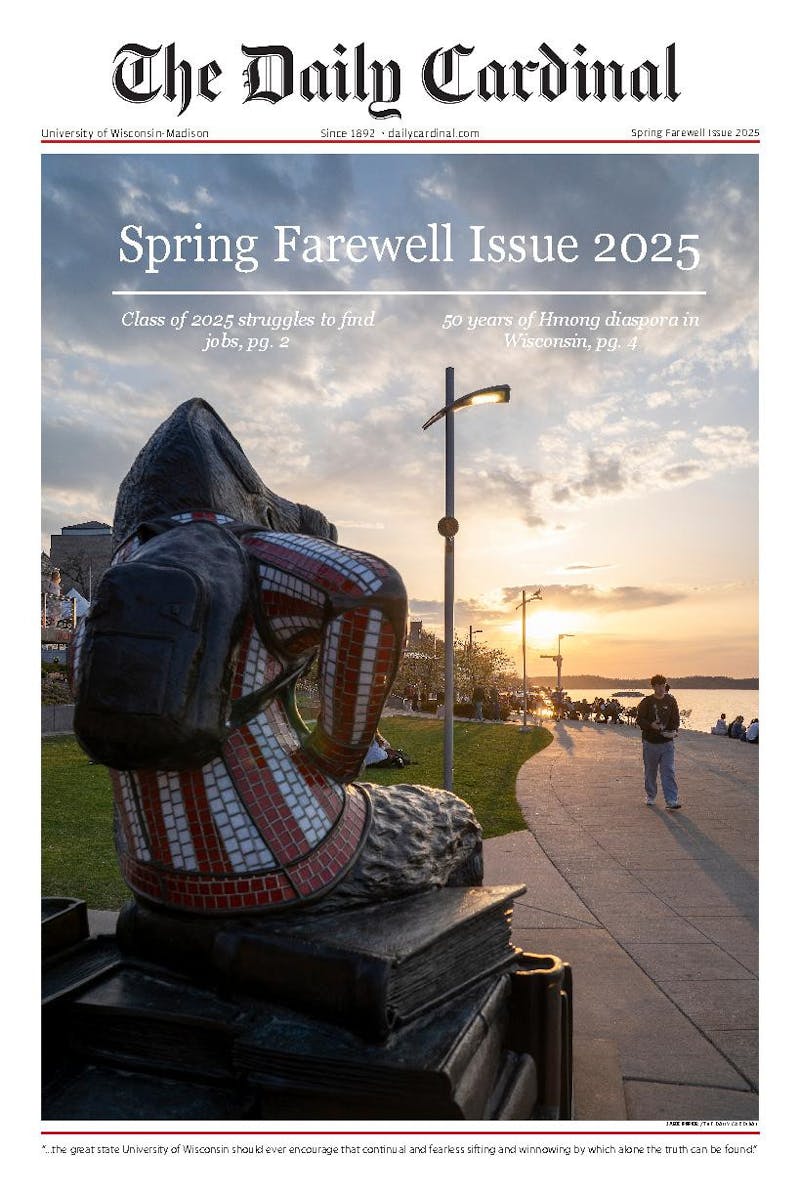Social media have enslaved us to the ""click and refresh."" It started modestly enough, waiting patiently as America Online dinged to signal the arrival of a message from a close friend. Its evolution into the 21st century has been dramatic—from e-mails to blogs to MySpace to Facebook. And as the decade closes, more and more networks are attempting to enter the fray. But try as they might, few join the list of sites users constantly check.
However, there is a growing addition to this list. With every new 140-character message sent, Twitter is growing out of its novelty status and becoming a valuable social network, according to Katy Culver, a faculty member in the School of Journalism and Mass Communication.
""I think when some people first started getting on it, it was because of its novelty,"" she said. ""There was a lot of, ‘Just got out of the shower.' ‘Going for a run.' Then I think people quickly realized that this was a social media that could be very useful for their passions as well as their professions.""
The concept of Twitter is based around microblogging, or blogging by only updating with small amounts of text. Type out a simple 140-character message on the website, through a text message or even from other social networks and share it with friends, family and the rest of the world.
""It's a very basic way of connecting with people and sharing information, and I think that's what drives use,"" Culver said.
However, there are still some skeptical of Twitter. Mike Zenz, a recent UW-Madison graduate and staff researcher, believes that although there are some useful functions of Twitter, for the average person, tweeting results in dull reports of everyday life.
""The way I see it used is people report minute aspects of their life that no one would really care about, and you can't give much of a message,"" Zenz said. ""What is the purpose of telling someone, ‘I'm going to the store'?""
Gabe Johnson, a fifth-year student at UW-Madison, shared a similar thought about using Twitter for personal use.
""I heard about Twitter a couple of years ago, and it seemed like a novelty,"" Johnson said. ""I didn't really understand why people wanted to basically broadcast their text messages.""
However, though Johnson and Zenz agreed there is little reason to broadcast and read about the humdrum of everyday life, they both see the potential in the professional world, specifically in journalism.
""I've heard of good things like breaking news,"" Johnson said. ""Something happens, somebody twitters on the spot at the event, that's great.""
Breaking news is right at home through Twitter, as journalists or the average person can quickly describe what is happening around them and broadcast it around the world instantly.
That is why twittering effectively has become an ever-increasingly important skill for journalists to have, according to Culver, and it embraces an important aspect of journalism: getting to the point, and quickly.
""In journalism, personally, I think it's a fabulous skill to be able to take a story down to 140 characters,"" Culver said.
News organizations, such as CNN, The New York Times and the Wall Street Journal, have begun using Twitter to get out their breaking news.
However, although Zenz believes broadcasting news instantly is a valuable aspect of Twitter, he thinks it could potentially have negative effects due to little fact-checking of what is being broadcast.
""You don't have the layers of checking, which can lead to mass-spread rumors,"" Zenz said. ""One person says it, the next person says it, it explodes and there's no verification of it.""
Dhavan Shah, Maier-Bascom professor for the School of Journalism and Mass Communication, shares a similar thought with Zenz.
""I still do like my journalism to be fast-tracked and focused through an editor,"" Shah said.
""I think it's an aspect of what journalists are expected to do now, but I don't know if it's the art of journalism.""
Although traditional journalism may be preferred the way it is, Twitter opens the floodgate for ""citizen journalism,"" allowing for the common person to report news they see from the scene, before it is reported by a professional.
This form of journalism was exemplified during the three-day coordinated shootings and bombings in Mumbai, India, in November 2008. Sue Robinson, assistant professor for the School of Journalism and Mass Communication, said that was the first big Twitter event that really showed the social network's capabilities.
""It was kind of a mass network journalism, or crowdsourcing is another term for it,"" Robinson said. ""A lot of people are writing in, and that mass—that collection of data—creates the news story.""
Citizens broadcast photos and commentary on Twitter during the attacks, keeping the public informed even as normal media outlets struggled to keep up with the crisis.
Shah said that was the first point where he began to really take notice of Twitter.
""I probably first got interested in Twitter more actively around the Mumbai coordinated attacks,"" he said. ""It's interesting because it was amazing what people were posting about Mumbai, what people were saying in real time.""
Robinson said social networking is allowing us as a society to connect at events, such as the horrors in Mumbai or the sentiments observers felt during President Obama's acceptance speech.
""When we were watching the Obama acceptance speech and all of those people in Chicago were Twitter and text messaging and giving updates on their Facebook pages, it was as if we were all there,"" Robinson said.
But even with this increased connection, Culver believes that social networking will never replace our normal human interaction.
""I don't think social media are ever going to supplant to the true human connections we have with the people that are closest to us.""
Even though speaking face to face will still be the ultimate form of contact, Twitter and other social media will be useful tools to enhance our everyday communication.





